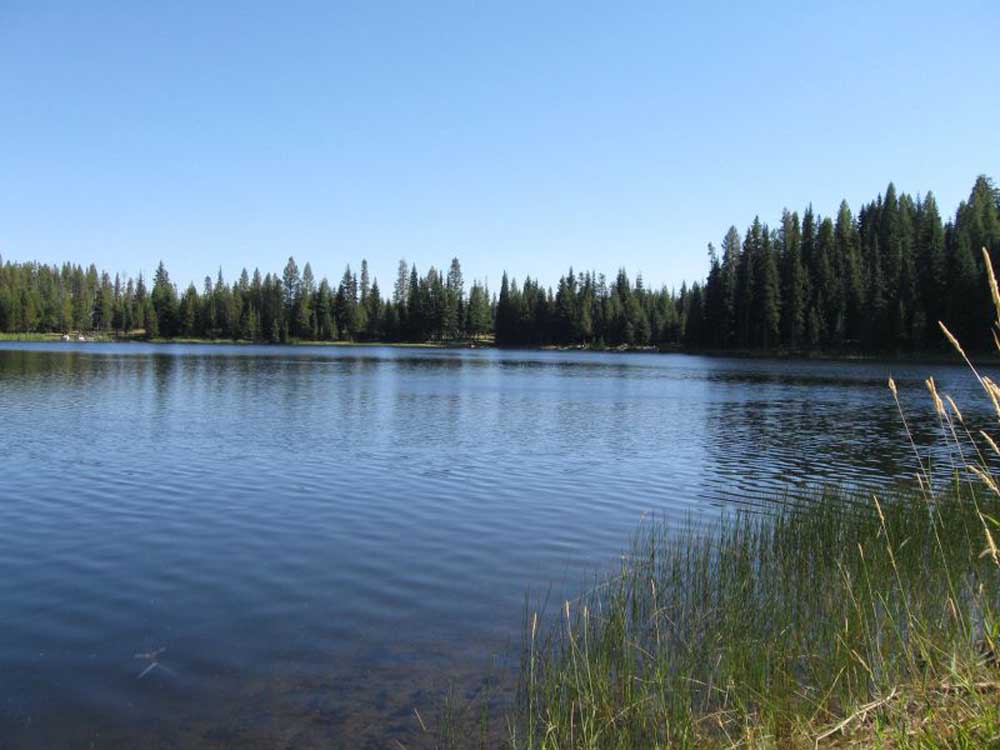On the trail: Hunting history — muzzleloader hunts in Eastern Oregon
Published 3:00 am Saturday, April 22, 2023

- You're in the Elkhorns now — a highway sign along the Elkhorn Scenic Byway, which circles the Elkhorn Mountains.
If you were to examine the contents of a wagon lurching out of Fort Boise headed toward the Powder River and points west in the 1850s, you would likely find a well-worn copy of “The Emigrants’ Guide to Oregon and California” by Lansford W. Hastings.
In Chapter 15 the greenhorn would have read this run-on sentence: “All persons, designing to travel by this route, should, invariably, equip themselves with a good gun; at least, five pounds of powder, and twenty pounds of lead; in addition to which, it might be advisable, also, for each to provide himself with a holster of good pistols, which would, always, be found of very great service, yet they are not indispensable.”
Hastings’ advice was for the mounted hunter to gallop alongside buffalo, and presumably elk. With pistols, Hastings said, “you may shoot them down at your pleasure.” Given that the pistols of the day were mainly single-shot muzzleloaders, I’m sure greenhorns found it more efficient to stalk close and use the rifle for one well-aimed shot.
Hastings, in his book, recommended hunters do not carry a cap under the hammer. This is still good advice today. On a hunt I carry caps in a dry pocket where I can reach in, grab one, and pinch it on at a moment’s notice.
Elk with black powder
To hunt elk with a muzzleloader in modern Oregon, the Department of Fish and Wildlife requires a minimum 50-caliber rifle. To be faithful to the spirit of Hastings’ pioneer, a 50- or 54-caliber Hawken-style percussion rifle with a 1-48 twist is a good place to start. But a hunter can also employ a more modern style provided it conforms to Department of Fish & Wildlife regulations.
A follow-up shot is often needed, so it pays to practice loading quickly. Once the technique is mastered, a hunter should be able to reload in 20 to 30 seconds.
To complete a blackpowder kit, a person should carry a “possibles” bag with the following components: powder, conical bullets, percussion caps, a short-starter ramrod, cleaning patches, several pre-loaded speedloaders and a knife or multi-tool.
Hunts to plan for
Because muzzleloader hunters are a small minority, sometimes the opportunities go overlooked. In the 2023 Oregon Big Game Regulations, the Oregon Department of Fish & Wildlife offers 12 muzzleloader elk hunts.
Of these, five Eastern Oregon offerings should have decent odds in the controlled hunt tag drawing for the hunter with no preference points.
For the most accessible ground, (80% public access), check out the High Desert (278M) in mid-October. Open units are 67, 68, 69, 70, 71 and parts of units 66 and 73. Most hunters spend their effort in the Wagontire Unit where success runs about 8%. If you draw this tag, carry extra horseshoes. And gasoline and spare tires.
Another option is the Eagle Cap (260M), a hunt which takes place in that portion of the Minam Unit within the Eagle Cap Wilderness boundary. This year ODFW offers 55 tags. Nine days is a good long hunt and enough time to pattern animals and get close to herds.
The new for ‘23 Catherine Creek (253M) hunt offers a chance at one antlerless elk with a season that runs Nov. 25 to Dec. 3.
Two other great options are there for the hunter with private land access in the Elkhorns. The Elkhorn No. 1 (251M1) runs Aug. 1 to Oct. 15 and Elkhorn No. 2 (251M2) runs from Oct. 16 through the end of the year. These antlerless hunts are easy to draw with zero points, but are limited to private lands in the Sumpter Unit.
A frontiersman with his coonskin thinking cap on might also apply for a Baker Muzzleloader (151M) tag for a November whitetail deer season opportunity while hunting elk.
Apply for a controlled hunt tag by May 15.
According to Hastings’ observations in the 1840s, this particular area of Oregon Territory, which later became Northeastern Oregon, had more game than the other parts of greater Oregon. Wolves were a problem, “very numerous, and troublesome to the surrounding settlers, among whom they make frequent incursions, destroying their sheep, hogs, and even young calves, in great numbers.”
Thanks to scientific game management and the efforts of conservation groups like the Oregon Hunters Association, it is still possible, 170 years later, to carry a rifle like Hastings’ readers did, to walk the mountains, forests and deserts, and have a good chance at seeing elk at close range.
If Hastings was still giving advice he would say: Watch over your shoulder for wolves. Keep a bear tag and cougar tags in the possibles bag.
And, dude, get off your horse before you cap your rifle!





